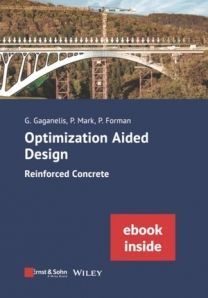About the book
Optimization Aided Design provides novel methods to use reinforced concrete in a particularly efficient way. Mathematical optimization is applied to the practical problems of concrete design. The aim is to employ the world's most widely used building material in the most economical way and thus substantially reduce CO2 emissions from cement and steel production as well as resource consumption of gravel, sand and water.
Three topics are addressed. First, the identification of the structure. This means the question of the right outer shape such that slender load-bearing designs develop following the flux of forces. In line with the stress affinity of the material, the structures are predominantly subjected to compression. Second, the reinforcement layout, which is oriented to the stress trajectories. Advantages arise particularly for walls, voluminous structural components, load introduction areas and cut-outs. Clear strut-and-tie models emerge that are directly convertible into reinforcement layouts. Third, the treatment of cross-sections. They are optimized in their shape and designed in their reinforcement. This also applies to sophisticated loading conditions (biaxial bending) and virtually arbitrary geometrical configurations. Parameterization allows the transfer to general cross-section types.
The optimization aided methods are described extensively and in an illustrative manner. They are universally applicable and independent of standards, concrete types and reinforcements. They apply to normal strength to ultra-high performance concretes, to reinforcements made of steel, carbon or glass fibers, and to rebars as well as reinforcing fibers. Numerous illustrations and computation examples demonstrate their application. Moreover, practical applications are presented, including ultra-light concrete-steel beams, slender concrete solar collectors, and improved reinforcement layouts for tunnel lining. The book addresses students, researchers, and practitioners alike.
(incl. ebook as PDF)



